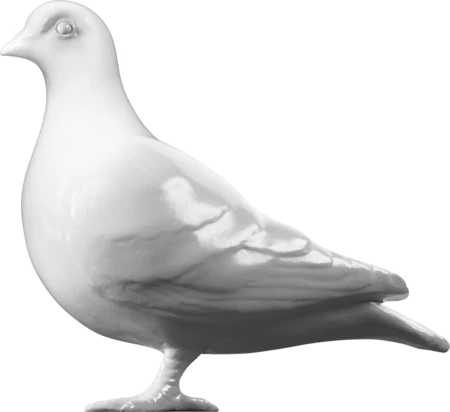Fashion — 1500-1599
Cap fragment, earflap
A single knitted woollen earflap or cheekpiece, 16th century. It would once have been attached to a knitted cap, worn by men in London's business and working communities in Tudor times. They were designed to be warm and waterproof. A range of styles and qualities were available to suit the taste and pocket of the customer.
The long lozenge or spearhead shaped ‘earpieces’ mostly survive separately from the caps, often with a cut at the top where it has been taken off. They were knitted separately in a tubular shape and stitched on either side of the head. However, since these long side pieces cover little of the ear and more of the jaw and neck under the chin, like a scarf, cheek pieces is a more accurate description.
The piece was part of the collection of the London Museum before 1927 and no further find details are known. Workman in the early 20th century digging deep foundations for new buildings around the City of London found many pieces of clothing and textiles buried in the earth. Many are in a good state of preservation and may have been lost from wearers’ heads or discarded when they became unfashionable (from around 1570), thrown into the City ditch and cesspits. Unfortunately, because these were not formal archaeological excavations, any strata details or contextual material such as pottery that would help date the caps more closely were lost.
TECHNICAL DETAILS
As part of the cap, the piece was fulled (washed, beaten and felted) and napped (raising and trimming the pile) to produce a stiff, hardwearing fabric.The fulling process has made the cheekpiece very stiff, with no elasticity or ‘give’ at all. The feel is more like crisp felt than soft knitting. The woollen yarn has a hard twist to it, much more tightly spun than modern yarns. This gives the density of fibres that creates the very fine, dense, velvety nap remaining on some caps. Where it exists, the pile entirely obscures the knit loops underneath. The fulling can also make it difficult to determine the yarn spin direction.
Tubular stocking stitch, knitted from the top with cast on edge tucked
Yarn - S? spun, 2 ply, yarn diameter 1.2 mm. 7 stitches per inch. 9 rows per inch. Munsell Colour Value 10YR 2/2. The ground yarn is the same colour as the remaining pile, suggesting it was yarn-dyed or is the natural wool colour. Width 5.5 inches; length 7 inches.
- Category:
- Fashion
- Object ID:
- A26575
- Object name:
- cap fragment, earflap
- Object type:
- Artist/Maker:
- —
- Related people:
- Related events:
- Related places:
- Production date:
- 1500-1599
- Material:
wool
- Measurements/duration:
- L 178 mm, W 135 mm
- Part of:
- —
- On display:
- —
- Record quality:
- 100%
- Part of this object:
- —
- Owner Status & Credit:
Permanent collection
- Copyright holder:
digital image © London Museum
- Image credit:
- —
- Creative commons usage:
- —
- License this image:
To license this image for commercial use, please contact the London Museum Picture Library.

